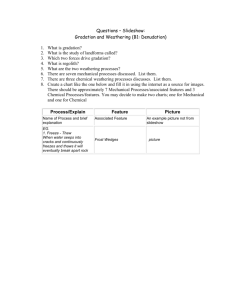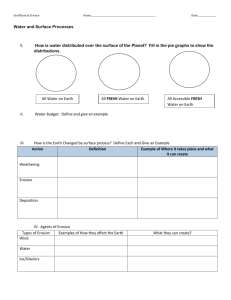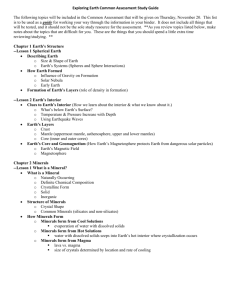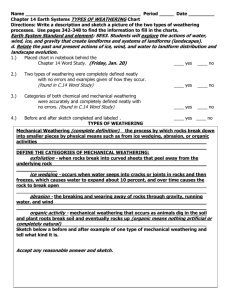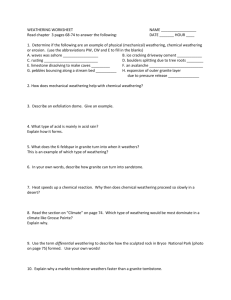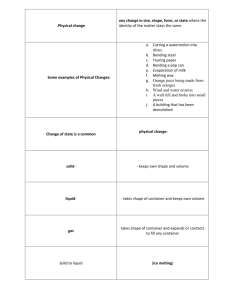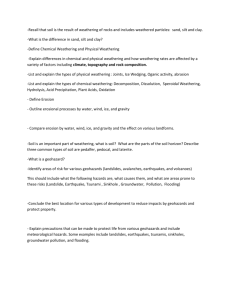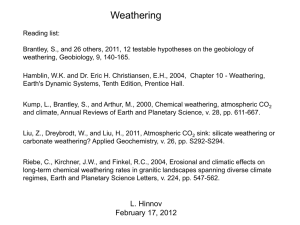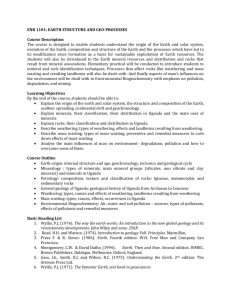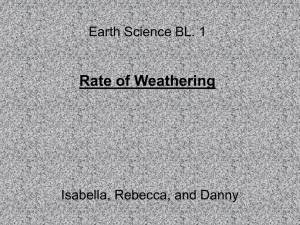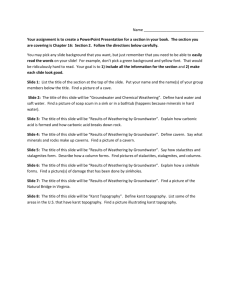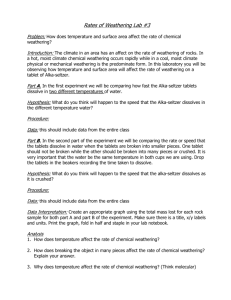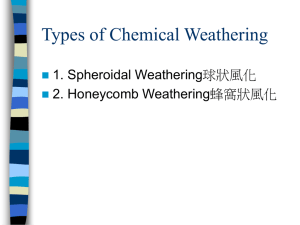- The Open University
advertisement
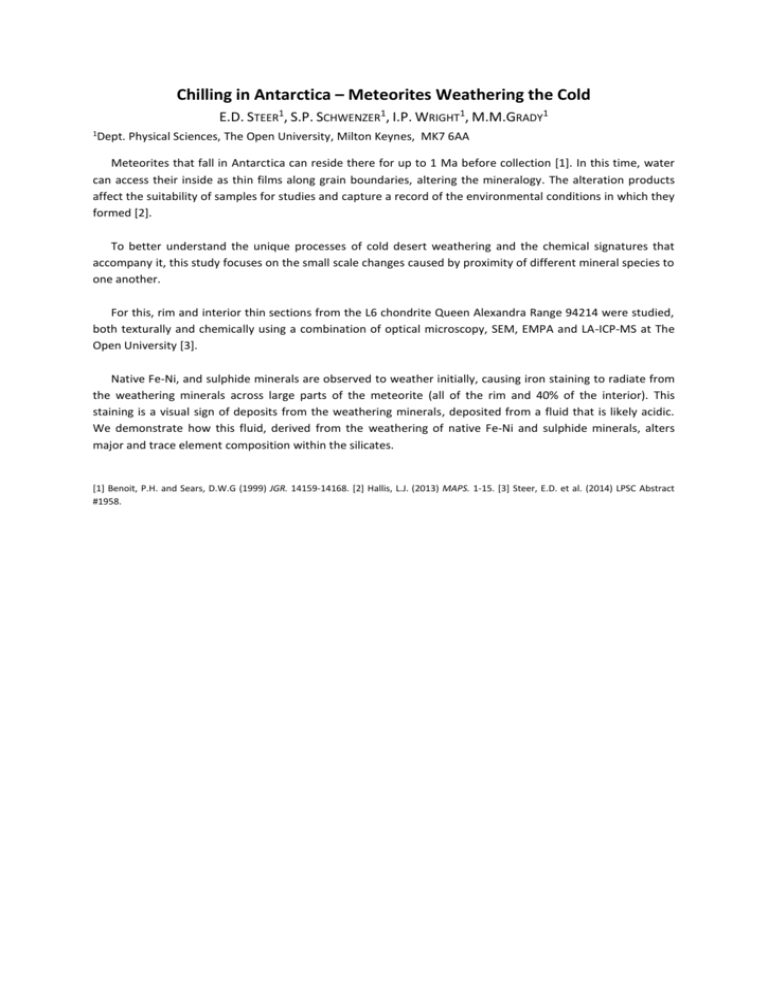
Chilling in Antarctica – Meteorites Weathering the Cold E.D. STEER1, S.P. SCHWENZER1, I.P. WRIGHT1, M.M.GRADY1 1 Dept. Physical Sciences, The Open University, Milton Keynes, MK7 6AA Meteorites that fall in Antarctica can reside there for up to 1 Ma before collection [1]. In this time, water can access their inside as thin films along grain boundaries, altering the mineralogy. The alteration products affect the suitability of samples for studies and capture a record of the environmental conditions in which they formed [2]. To better understand the unique processes of cold desert weathering and the chemical signatures that accompany it, this study focuses on the small scale changes caused by proximity of different mineral species to one another. For this, rim and interior thin sections from the L6 chondrite Queen Alexandra Range 94214 were studied, both texturally and chemically using a combination of optical microscopy, SEM, EMPA and LA-ICP-MS at The Open University [3]. Native Fe-Ni, and sulphide minerals are observed to weather initially, causing iron staining to radiate from the weathering minerals across large parts of the meteorite (all of the rim and 40% of the interior). This staining is a visual sign of deposits from the weathering minerals, deposited from a fluid that is likely acidic. We demonstrate how this fluid, derived from the weathering of native Fe-Ni and sulphide minerals, alters major and trace element composition within the silicates. [1] Benoit, P.H. and Sears, D.W.G (1999) JGR. 14159-14168. [2] Hallis, L.J. (2013) MAPS. 1-15. [3] Steer, E.D. et al. (2014) LPSC Abstract #1958.





